This article was medically reviewed by Sarah Gehrke, RN, MS and by wikiHow staff writer, Christopher M. Osborne, PhD. Sarah Gehrke is a Registered Nurse and Licensed Massage Therapist in Texas. Sarah has over 10 years of experience teaching and practicing phlebotomy and intravenous (IV) therapy using physical, psychological, and emotional support. She received her Massage Therapist License from the Amarillo Massage Therapy Institute in 2008 and a M.S. in Nursing from the University of Phoenix in 2013.
There are 11 references cited in this article, which can be found at the bottom of the page.
This article has been viewed 29,103 times.
Testing your cholesterol is a quick, easy, and important way to evaluate your risk of developing conditions like heart disease, diabetes, or stroke. While getting tested at your doctor’s office is the most reliable option, you can also use at-home tests that require only a small blood sample and a few minutes of waiting. Whether you choose a color-coded strip kit or a digital readout kit, use your findings as a starting point and work with your doctor to make any changes necessary to improve your cholesterol levels and overall health.
Steps
Using a Color-Coded Strip Test Kit
-
1Choose a color-coded strip kit for a budget-friendly, basic option. Pharmacies often carry several types of tests that utilize a color-changing strip to assess your cholesterol. They’re less expensive than multi-use digital testers, usually costing $20-$50 USD, and are reasonably accurate when used correctly. However, they generally don’t break down the different aspects of your cholesterol reading.[1]
- While often called “single-use” strip kits, don’t be confused—many kits contain multiple testing strips, but each strip can only be used once. You might, for example, find a kit that contains enough single-use strips for 4 individual cholesterol tests.
- If you’re buying a kit online, choose one that’s approved by the FDA (in the U.S.) or similar government agency where you live.
- If you just want to test your cholesterol out of curiosity or only occasionally, this may be the right option for you. If you plan to test your cholesterol more frequently—due, for example, to your doctor’s recommendation—a digital readout tester may be a better choice.
-
2Use clean hands to open an alcohol swab, test strip, and lancet. Wash your hands with soap and water and dry them with a clean towel. Open one of the sealed, sterile packets in your kit that contains a test strip. Do the same with one alcohol swab packet and one packet holding the lancet you’ll use to prick your finger. Essentially all test kits now use lancets that are pre-loaded into individual “lancet pens.” You’ll likely need to pop the cap off of the pen, so check the kit’s instructions if you need guidance.[2]
- Read the product instructions carefully, especially for using the lancet pen. Talk to your pharmacist if you need additional help.
- The lancets themselves look a bit like large sewing needles, but few if any test kids use lancets that aren’t pre-loaded into individual pens. Lancet pens are much easier to use than loose lancets, so always choose a kit that contains pre-loaded pens.
Advertisement -
3Prick your sterilized finger with the lancet pen to draw blood. Unless your specific product instructions tell you otherwise, do the following: Wipe the alcohol swab over the pad of one of your fingers and let it dry for a few seconds. Press the dispensing end of the pen (it often has a red button at the end) against your finger pad. This causes the lancet to emerge, prick your finger, and retract very quickly. Pull the pen away and set it aside to toss in the trash as soon as you’re finished.[3]
- Do not re-use lancet pens. Throw the pen away after a single use.
- You’ll feel a bit of pain when the lancet pricks your finger, but it will only last for a few seconds.
-
4Wipe 1-2 drops of blood onto the testing strip. As soon as you see 1-2 drops of blood well up from your finger pad, smear the blood onto the clearly-marked testing area of the test strip. Wrap a clean tissue around your finger pad if needed to stop the bleeding, but don’t put the test strip down in the process.[4]
- Squeezing your finger (or “milking” your finger) to push out blood may mess up your test results. If you aren’t getting any blood flow, try again with a new lancet on a different finger. If that still doesn’t work, have a medical professional conduct your test.
- Be sure to securely dispose of any tissues or other materials that get your blood on them. Consider double-bagging them for extra safety.
-
5Wait the designated amount of time for the test strip to change colors. Color-coded strip kits usually take several minutes to produce results. The spot on the testing strip where you wiped your blood sample will slowly change color. Be sure to wait the amount of time directed by the kit’s instructions, or your results may not be accurate.[5]
- Remember to be patient! Assessing a color-coded test strip too early or too late could give you an incorrect result.
-
6Compare the color of your test strip to the provided color-coded chart. Pull out the labeled color chart that comes with your color-coded strip test kit. Hold your test strip up to the chart and find the closest color match. That color will correspond to a cholesterol range listed clearly on the chart. Your total blood cholesterol falls within this range.[6]
- For example, a deep crimson color might correspond to a cholesterol range of 180-200 mg/dl. Assuming that the test is accurate and you’ve done it correctly, your total cholesterol is within this range.
- Color-coded strip kits don’t give you a specific cholesterol number.
-
7Compare your result to the recommended total cholesterol range. Since most color-coded strip test kits only test for total cholesterol, your only point of comparison will probably be the recommended total cholesterol range. For the average healthy adult, the ideal range is between 125 to 200 mg/dl. However, your ideal range may be different, based on your particular circumstances.[7]
- No matter your result, your best option is to share the information with your doctor.
- “mg/dl” refers to milligrams of cholesterol per deciliter of blood. The higher your mg/dl is, the more susceptible you are to developing blockages in your arteries.
Testing with a Digital Meter Kit
-
1Invest in a digital tester if you need to check your cholesterol regularly. Although they cost at least twice as much as color-coded testing kits—usually around $100 USD—digital testers are easier to use, give more detailed results, and are more convenient for regular testing. If you’re interested in tracking your cholesterol over time and you want specific readings for different types of cholesterol, make this your choice.[8]
- A digital tester is a good choice if, for instance, you need to keep an eye on your readings because you have a history of high cholesterol.
- Digital readout testers are available at pharmacies and online retailers. Always choose a kit that’s approved by the FDA (in the U.S.) or similar government agency where you live.
-
2Wash your hands and open an alcohol swab, test strip, and lancet packet. Use soap and water to wash your hands and a clean towel to dry them. Open one of the sealed, sterile packages in your kit that contains a test strip, as well as one packet containing an alcohol swab. Also open one lancet package. Nearly all kits use lancets that are pre-loaded into individual “lancet pens.” Pop the cap off of the pen, if necessary, as directed by the kit’s instructions.[9]
- Take a good look at both the pen and the product instructions so you’re sure how to use the lancet correctly. If you need further guidance, talk to your pharmacist.
- It is extremely unlikely that you’ll find a kit that uses lancets that aren’t pre-loaded into pens (if so, they’ll look a little like sewing needles). If you do have such a kit, definitely get instructions on how to use it properly from your pharmacist or physician—or buy a different kit!
-
3Prick your finger with the lancet pen to draw blood. Follow the specific product instructions, but expect to do the following: Wipe the pad of your finger with the alcohol swab, then let it dry for 5 seconds. Press the end of the pen with the red button (or similar) against the pad of one of your fingers. The lancet will emerge, prick your finger, and then withdraw back into the pen when you pull it away. Set the pen aside to throw in the trash as soon as you’re done testing.[10]
- Never re-use a lancet pen. Throw it away and use a new pen the next time you (or someone else) wants to do a cholesterol test.
- Your fingertip is a sensitive area, so pricking it with the lancet will hurt a little—but only for a few seconds.
-
4Smear 1-2 drops of blood onto a test strip. Hold your finger pad-side up and wait for 1-2 drops of blood to bubble up from the lancet prick. Wipe the clearly-marked testing area of the strip over the blood to transfer it to the strip. Without putting down the test strip, use a clean tissue to stop any additional bleeding while you continue the test.[11]
- Don’t "milk" your finger by squeezing it in order to force out blood that doesn't want to flow onto the test strip. Doing this can throw off your results. Try with a different finger and, if that doesn’t work, have the test done by a medical professional.
- Your fingertip will likely stop bleeding on its own within seconds.
- Use safe blood handling procedures when doing the test. Above all, make sure that the blood only goes onto the test strip and that any blood-tainted items go straight into the trash.
-
5Insert your test strip into the marked slot of the digital meter. Make sure the meter is turned on, then slide the test strip into the device as directed by the kit instructions. The meter may start analyzing your sample automatically, or you may need to press a button to begin the process. Once again, follow the product instructions and talk to your pharmacist if you need help.[12]
- It should only take a few seconds for the meter to analyze your sample.
-
6Evaluate your test results based on a reliable cholesterol chart. Your testing kit likely came with a chart that lets you know if your numbers are high, low, or in the good range. Alternatively, check online to get an up-to-date chart from a reliable health website.[13]
- Generally speaking, the “healthy” range for the average adult is as follows:
- Total cholesterol: 125 to 200 mg/dl (milligrams per deciliter of blood).
- Non-HDL: less than 130 mg/dl.
- LDL: less than 100 mg/dl. LDL cholesterol is “bad” because it tends to end up collecting in your arteries and can cause blockages.
- HDL: 40 mg/dl or higher (men); 50 mg/dl or higher (women). HDL cholesterol is “good” because it helps to clear LDL from your body.
- Your healthy range may be different based on a wide range of factors. It’s always best to discuss your results and any concerns with your doctor.
- Generally speaking, the “healthy” range for the average adult is as follows:
Seeking Medical Advice and Care
-
1Share your at-home results with your doctor, especially if they’re high. At-home tests can help you determine if your cholesterol is high, but they can’t provide you with personalized medical advice like your doctor. If your test results are outside of the healthy range, definitely call your doctor. They will most likely want you to come to the office to do another cholesterol test.[14]
- Even if your test results are in the healthy range, consider calling your doctor’s office and sharing your results. It’s never a bad idea to let a professional interpret your results!
-
2Take a follow-up test at your doctor’s office if they advise it. The in-office test may involve a finger prick like your at-home test, but it’s more likely that a blood sample will be collected from your arm with a needle. The lab will test this sample in more detail than your at-home test and give your doctor a more accurate and expansive view of your blood cholesterol levels.[15]
- You may need to fast (refrain from eating) for up to 12 hours before your in-office test. Confirm this with the office beforehand. If this is the case, schedule your test in the morning so you can do most of your fasting time while you’re asleep!
-
3Work with your doctor to lower your cholesterol, if necessary. If your cholesterol tests reveal that your levels are too high, it's important to start lowering them right away. This can be done in a variety of ways, including dietary changes, lifestyle changes, and medications. Talk to your doctor about what you can do in both the short-term and long-term to lower your cholesterol. Common recommendations include:[16]
- Eating more fruits and vegetables, whole grains, lean proteins, and healthy fats, and fewer foods containing added sugars and unhealthy fats.
- Doing 150+ minutes of moderate-intensity aerobic exercise per week, as well as 2+ strength training sessions per week.
- Quitting smoking and cutting back on your alcohol intake.
- Taking statins or other medications that can help reduce cholesterol levels.
-
4Talk to your doctor about your risk for certain health conditions. Having high cholesterol can increase your risk of developing heart disease, type 2 diabetes, and stroke. Other health conditions and risk factors, such as family history, may further increase your risk of developing one or more of these conditions. Instead of being afraid, take charge and work with your doctor to devise the best strategy to protect your health and reduce your risk.[17]
- Your doctor will likely monitor your cholesterol levels with regular in-office testing to find out if they’re improving.
Warnings
- Since every at home cholesterol kit is slightly different, it's important to read all the directions before you start the test. This will ensure that you get the most accurate reading possible.⧼thumbs_response⧽
- Using an at home test kit incorrectly can give you incorrect results. Getting a cholesterol test at your doctor’s office will probably give you a more reliable result.[18]⧼thumbs_response⧽
References
- ↑ http://www.heart.org/HEARTORG/Conditions/Cholesterol/HowToGetYourCholesterolTested/How-To-Get-Your-Cholesterol-Tested_UCM_305595_Article.jsp#.WrWVbIJryRs
- ↑ https://www.heartuk.org.uk/cholesterol/home-samples-and-testing
- ↑ https://www.fda.gov/medical-devices/home-use-tests/cholesterol
- ↑ https://www.health.harvard.edu/heart-health/cholesterol-testing-at-home-it-may-be-faster-but-is-it-better
- ↑ https://www.goodrx.com/conditions/high-cholesterol/at-home-cholesterol-tests
- ↑ https://www.fda.gov/medical-devices/home-use-tests/cholesterol
- ↑ https://medlineplus.gov/cholesterollevelswhatyouneedtoknow.html
- ↑ https://www.mayoclinic.org/diseases-conditions/high-blood-cholesterol/expert-answers/cholesterol-test-kits/faq-20057822
- ↑ https://www.fda.gov/medical-devices/home-use-tests/cholesterol
- ↑ https://www.fda.gov/medical-devices/home-use-tests/cholesterol
- ↑ https://www.health.harvard.edu/heart-health/cholesterol-testing-at-home-it-may-be-faster-but-is-it-better
- ↑ https://www.fda.gov/medical-devices/home-use-tests/cholesterol
- ↑ https://medlineplus.gov/cholesterollevelswhatyouneedtoknow.html
- ↑ https://www.mayoclinic.org/tests-procedures/cholesterol-test/about/pac-20384601
- ↑ https://www.nhs.uk/conditions/high-cholesterol/getting-tested/
- ↑ https://www.heart.org/en/health-topics/cholesterol/prevention-and-treatment-of-high-cholesterol-hyperlipidemia
- ↑ https://www.nhs.uk/conditions/high-cholesterol/getting-tested/
- ↑ https://heartuk.org.uk/health-and-high-cholesterol/cholesterol-tests---know-your-number
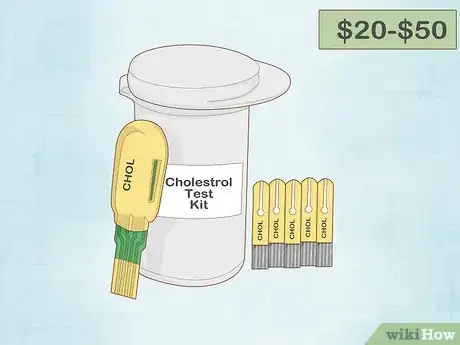

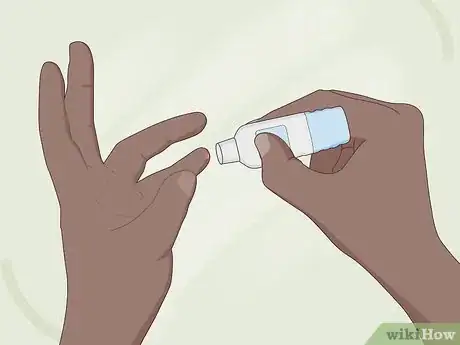
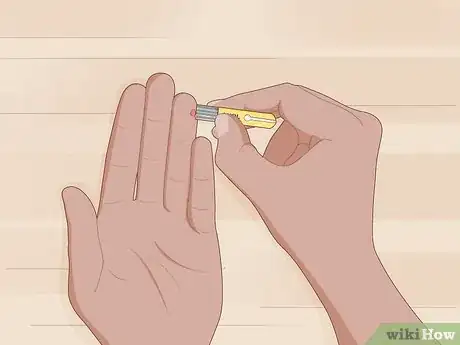


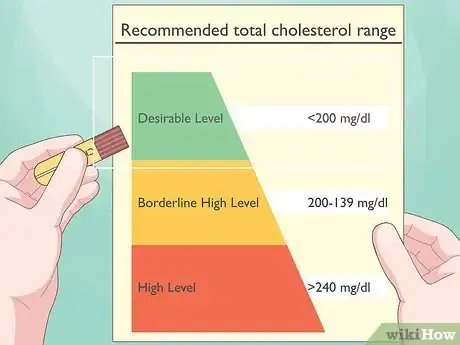
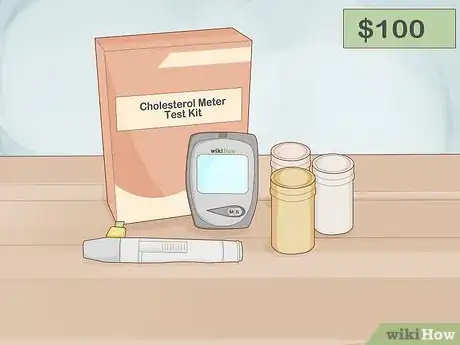
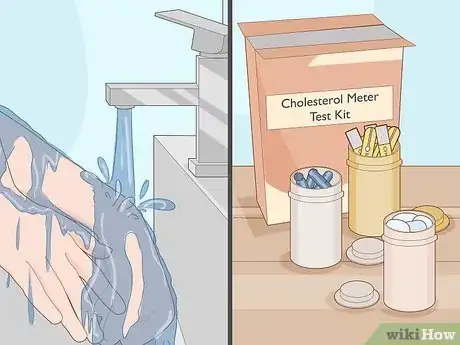
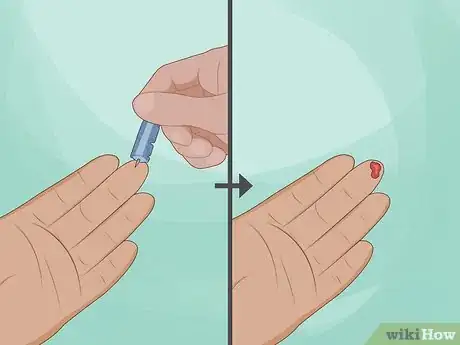
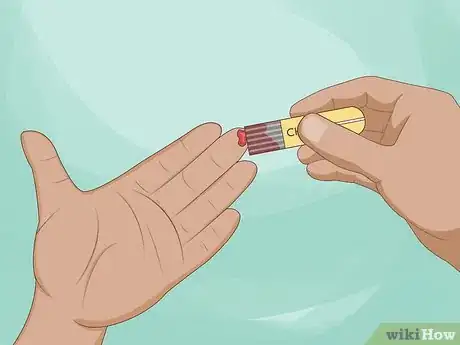
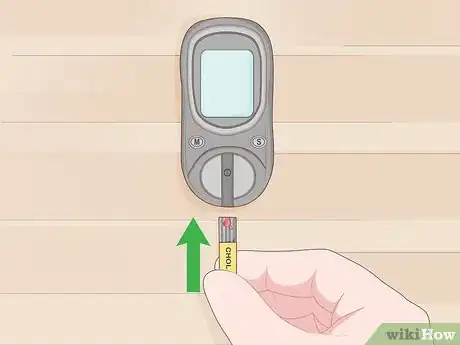
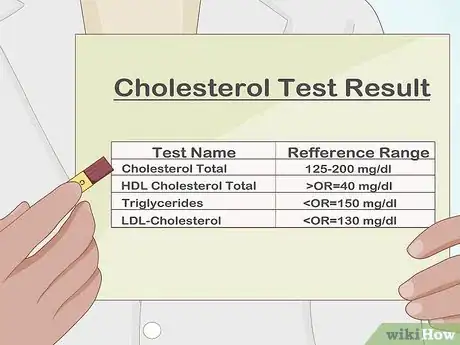


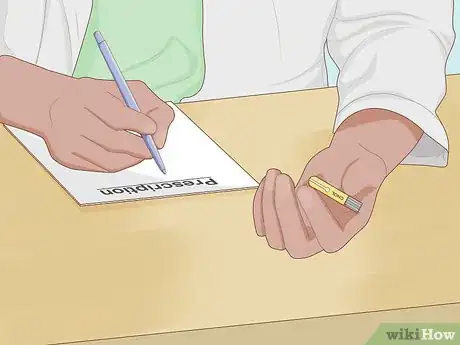





























































Medical Disclaimer
The content of this article is not intended to be a substitute for professional medical advice, examination, diagnosis, or treatment. You should always contact your doctor or other qualified healthcare professional before starting, changing, or stopping any kind of health treatment.
Read More...